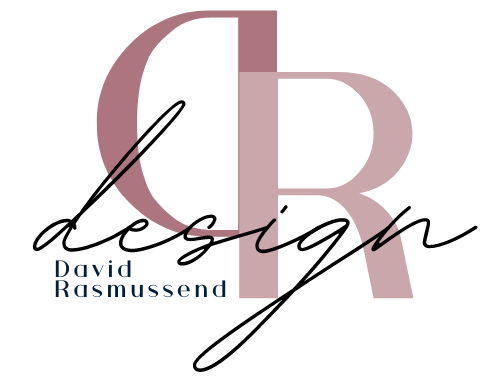Towels are an essential part of our daily lives, and we use them to keep ourselves clean and dry. Over time, however, towels can become dull and discolored, making them less effective and less appealing to use.
Fortunately, there are several ways to whiten towels and restore their brightness and softness. In this blog post, we will explore some of the most effective methods for whitening towels, including natural remedies and commercial products. Whether you’re looking to rejuvenate your old towels or simply want to keep your new ones looking their best, this guide will provide you with all the tips and tricks you need to achieve sparkling, fresh-smelling towels every time.
Understanding the Causes of Dingy Towels

Dingy or discolored towels can be both an eyesore and a source of unnecessary frustration. Understanding the causes of this discoloration is key to effectively whitening your towels. This blog will explore the different causes of dingy towels and provide practical tips on how to easily bring them back to their original vibrant color.
Common causes
They are a common and frustrating problem that no one wants to deal with. There are several reasons why they may become discolored and lose their brightness over time. Understanding the causes of dingy towels can help you prevent this from happening in the future and get them to look clean and fresh again. Here are some common reasons for dingy towels:
- Overuse of detergent or fabric softener: Using too much detergent or fabric softener can leave a buildup on your towels, causing them to lose their brightness and softness.
- Hard water: Deposits from hard water can cause them to become discolored and rough.
- Usage of bleach: Bleach is a harsh chemical that can weaken the fibers of them and cause them to turn yellow or gray over time.
- Failure to remove makeup effectively: Leftover makeup and beauty products can stain your towels and cause discoloration.
The difference between bleaching and whitening towels
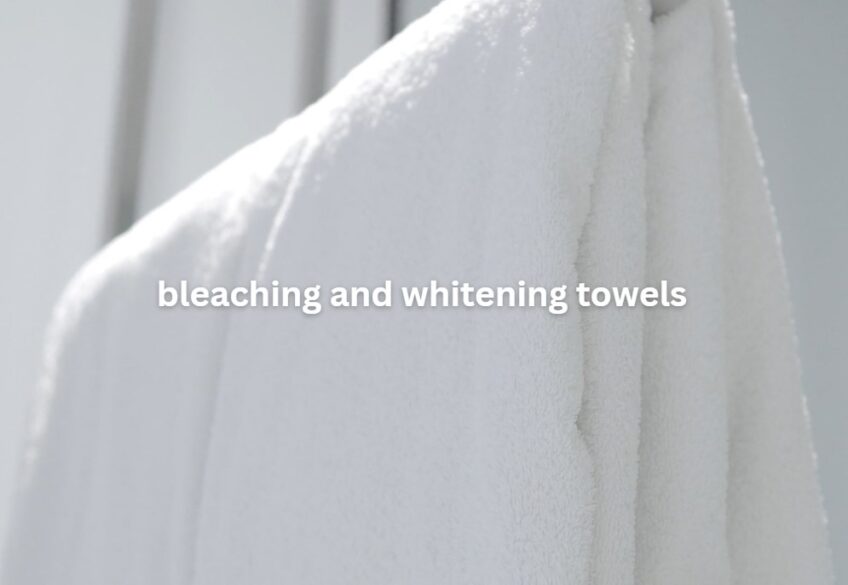
Bleaching and whitening are two techniques used to restore the brightness of dull or dingy towels, but they work in different ways. Bleaching is a chemical process that uses harsh chemicals like chlorine to remove stains and whiten fabric. Bleaching can damage the fibers over time and weaken them, causing them to deteriorate faster.
On the other hand, whitening is a gentler, natural process that uses baking soda or vinegar to remove stains and brighten fabric. These natural ingredients are milder than bleach and are less likely to damage towels’ fibers, making them a safer option for regular use. By following a regular cleaning routine and using natural whitening agents, you can keep them looking bright and new for longer.
How to prevent towels from becoming dingy in the first place
They tend to become dingy over time due to a buildup of dirt, oils, and skincare products. However, there are a few ways to prevent your towels from becoming bleak in the first place. Here are some ways to keep them clean and vibrant:
- Limit the use of skin care products such as lotions and oils before using your towels.
- Wash them separately from other clothing items, especially those with velcro or hooks as they can easily snag and damage the fabric.
- Avoid overloading the washing machine and use the appropriate amount of detergent and fabric softener recommended on the product label.
- After each use, hang them up to dry in a well-ventilated area without folding them, to prevent moisture buildup which can lead to mildew and odor.
- If you accidentally spill cooking oil on your towels, treat the stain as soon as possible with a stain remover before washing.
If you notice your towels starting to appear dull or gray, consider washing them with vinegar or baking soda to remove any buildup and brighten the fabric.
Preparing Towels for Whitening
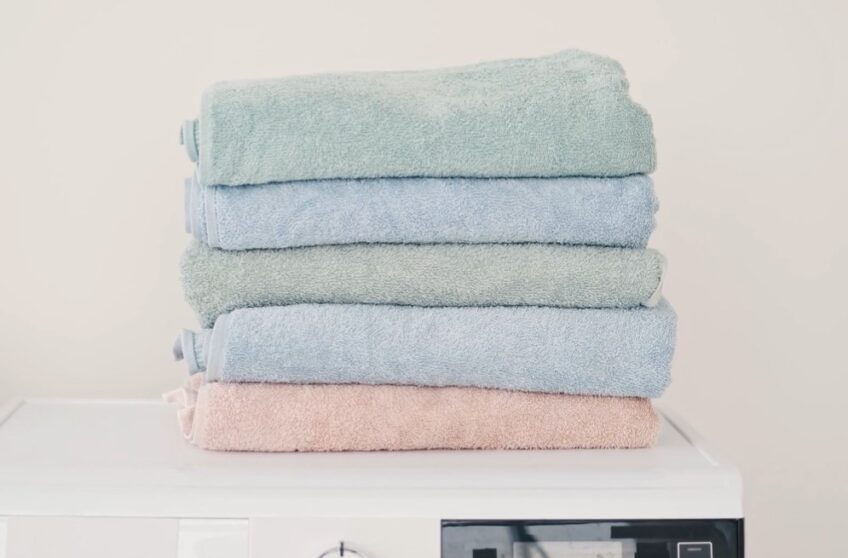
Whether you want to restore your dingy towels to their original color or just desire to keep them looking fresh and clean, whitening them can be a great way to achieve this. Before you jump into any whitening process, however, it is important to properly prepare them in order to get the best results. Here, we will discuss the best way to prepare your towels for whitening.
Sorting by color
Sorting them by color before washing is a crucial step in preparing them for whitening. Separating them will ensure that the darker fibers don’t transfer onto lighter towels when they’re washed together. Here’s how to sort towels by color:
- Collect the ones that need to be washed.
- Divide them into three piles: white, light-colored, and dark-colored.
- Wash them separately in hot water with detergent and bleach.
- Wash the light-colored towels separately in warm water with detergent and a color-safe bleach if desired.
- Wash the dark-colored ones separately in cold water with detergent.
- Dry completely before using or storing them.
Following these steps will ensure that your towels come out looking as good as new, especially after being whitened.
Removing stains from towels
Removing stains from towels is a common household challenge that requires simple yet effective solutions. To prepare them for stain removal, follow these simple steps: – Soak the towels in hot water and laundry detergent for at least 30 minutes. – Add 1 cup of white vinegar to the washing machine during the rinse cycle. – Dry them outdoors in sunlight or indoors with a dryer on low heat. – For stubborn stains, create a paste by mixing equal parts baking soda and water. Apply the solution directly to the stain and let it sit for 10-15 minutes before washing it as normal. To prevent future stains and discoloration, avoid using fabric softeners and limit the use of bleach. Also, wash them separately from other laundry items.
Choosing a whitening agent
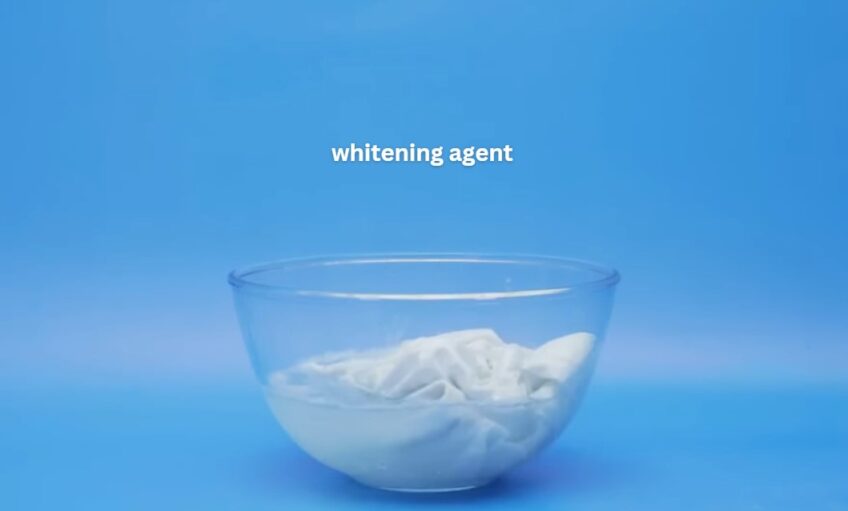
Chlorine bleach: Chlorine bleach is strong and effective in removing stains and whitening fabrics but can be harsh on fibers and should only be used on white or color-fast towels.
- Oxygen bleach: Oxygen bleach is a gentler alternative to chlorine bleach and is safe to use on all types of fabric, even colored towels.
- Borax: Borax is a natural mineral that can be used as a laundry booster and whitener. It is safe to use on most fabrics but may not be as effective as bleach.
- Vinegar: Vinegar is a natural cleaner that can be used to remove stains, soften towels, and help brighten whites. However, it is not as effective as bleach or oxygen bleach in whitening.
Choose the whitening agent that best suits your needs and follow the manufacturer’s instructions for optimal results.
Using Whitening Agents
There are a few different ways you can use whitening agents to get them back to their former glory. This section will cover all of the different methods you can use to bleach and whiten your towels.
Using chlorine bleach
Chlorine bleach is one of the most effective whitening agents for them, but it should be used with caution to avoid damaging the fabric. Here are the steps to follow when using chlorine bleach on towels:
- Read the care label to ensure that they are bleach-safe.
- Add 1/2 to 3/4 cup of chlorine bleach to a full load of laundry, following the instructions on the bleach packaging.
- Allow the washing machine to fill with water before adding them.
- Let them soak in the bleach solution for 5-10 minutes, depending on the level of discoloration.
- Run the washing cycle as usual and avoid over-drying the towels.
Be careful when using chlorine bleach as it can weaken the fibers over time. Always follow the recommended dosage and handling instructions to prevent damage. Alternatively, you can use natural whitening agents such as vinegar or baking soda to brighten your towels without harming the fabric.
Using oxygen bleach
Oxygen bleach is one of the most effective and gentle ways to whiten them without harsh chemicals. Here’s how to use it:
- For a top-loading washing machine, add 1 cup of oxygen bleach to the machine before adding them. If you have a front-loading machine, dissolve the oxygen bleach in a bucket of hot water before adding it to the machine.
- Set your washer to the hottest water setting and run a full cycle.
- Once the cycle is complete, hang them outside to dry or tumble dry them on low heat. Avoid using fabric softener, as it can leave a residue that dulls the whiteness of your towels.
Oxygen bleach is gentler than traditional chlorine bleach and won’t damage your towels’ fibers. It’s also environmentally friendly and safe to use on most towel materials.
Using vinegar or lemon juice
Using either vinegar or lemon juice is a great way to whiten and brighten them, without damaging the fabric or using harsh chemicals. Here’s how to use vinegar or lemon juice to whiten them: Vinegar: Add one cup of distilled white vinegar to your washing machine’s rinse cycle, in place of fabric softener. The vinegar will help to remove any soap residue and buildup, while also brightening and softening your towels. Lemon juice: Add 1/2 cup of freshly squeezed lemon juice to your washing machine’s rinse cycle, in place of fabric softener. The natural acids in the lemon juice will break down any buildup and residue, leaving them bright and fresh.
Alternative Methods
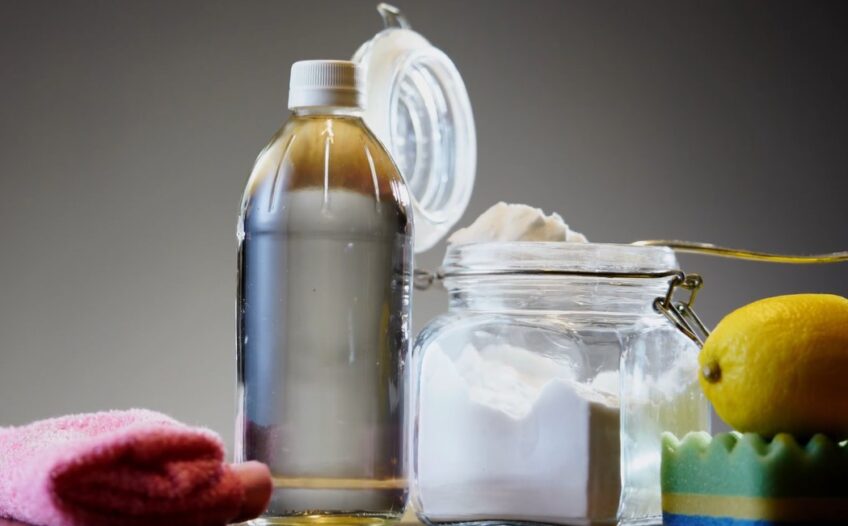
It can be difficult to keep them bright and white, but it doesn’t have to be. Several alternative methods for whitening them don’t involve harsh chemicals or bleaches. In this section, we’ll look at some of these natural, effective methods for whitening your towels so you can keep them looking their best.
Baking soda
Baking soda is a tried and tested alternative method for whitening them. It is an effective and natural way to brighten white towels without using any harsh chemicals. Here’s how to use baking soda to whiten them:
- Before washing them, add 1 cup of baking soda to the washing machine drum.
- Add your towels and run a hot water cycle.
- After the cycle is complete, add 1 cup of white vinegar to the washing machine drum and run another hot water cycle.
- Dry them outside in the sun or in a dryer on low heat.
- Baking soda helps to loosen and remove dirt and stains, while the acetic acid in the vinegar helps to remove any lingering smells and brighten the fabric. This method is also safe for the environment and gentle on your towels.
Borax
Borax is a natural, effective, and affordable alternative to bleach for whitening them. Follow these steps to whiten them using borax:
- Add 1/2 cup of borax to your washing machine along with your regular detergent.
- Use the hottest water setting recommended on your towel’s care label.
- Allow the cycle to complete, then remove them from the washing machine and inspect their brightness.
- If needed, repeat the process once more for heavily soiled or stained towels.
Hydrogen peroxide
Hydrogen peroxide is a popular and effective alternative to using bleach for whitening towels. Here’s how to use it:
- Add half a cup of hydrogen peroxide to your washing machine drum along with your regular detergent and set it to a hot wash cycle.
- Allow the load to soak for 30 minutes before resuming the cycle.
- Alternatively, you can pre-treat individual towels with a solution of one part hydrogen peroxide to two parts water.
- Soak them in the solution for 30 minutes before laundering them as usual.
- Hydrogen peroxide is a natural whitener that’s safe for most fabrics and won’t damage the fibers. Plus, it’s an eco-friendly alternative to bleach!
Maintaining
Maintaining them can be challenging but it doesn’t have to be daunting. With the right techniques and proper care, you can keep your towels looking white and bright.
Here we will discuss the proper techniques and methods to keep them looking like new. Keep reading to learn more about how to keep your towels looking their best. Discover the shocking truth about bacteria and fungi lurking on your towels in this eye-opening video.
How to keep towels white after whitening
Keeping them white after whitening requires a few simple steps to maintain their brightness and prevent future yellowing or discoloration. Here are some tips to keep your towels looking white:
- Separate white ones from other colored fabrics when washing and avoid washing them with heavy fabrics like denim or towels with a colored pattern.
- Use the recommended amount of detergent, too little may result in stains, and too much can lead to a buildup that dulls the color.
- Add half a cup of baking soda to the wash, along with the detergent, to boost cleaning power.
- Use vinegar instead of fabric softener to help break down any remaining detergent and soften your towels without leaving a residue.
- Avoid using bleach or bleach alternatives frequently, they can weaken the fabric fibers and cause yellowing with time.
With these simple steps, you’ll keep your white towels sparkling clean and looking their best.
FAQs
Can I use lemon juice to whiten my towels?
Yes, lemon juice can be used to whiten them. Simply add 1/2 to 1 cup of lemon juice to the rinse cycle when washing them.
Can I use fabric softener on towels?
It is best to avoid using fabric softener on them, as it can leave a residue on them and make them less absorbent.
How often should I wash my towels?
Ones that are used frequently should be washed at least once a week to prevent the buildup of dirt, oil, and sweat.
Can I use a commercial product to whiten my towels?
Yes, there are many commercial products available that are specifically designed to whiten them. It is important to follow the instructions on the product carefully and to avoid using too much of it, as it can damage their fibers.
Can I use a dryer sheet when drying towels?
It is best to avoid using dryer sheets when drying them, as they can leave a residue on them and make them less absorbent.
How can I prevent towels from becoming rough?
To prevent them from becoming rough, it is important to avoid using too much detergent or fabric softener, use a low or medium heat setting when drying them, and avoid over-drying them in the dryer.
Conclusion
In conclusion, keeping towels looking bright and fresh is essential to maintain their quality and functionality. Whether you prefer using natural remedies or commercial products, there are several effective ways to whiten towels and restore their brightness. By understanding the causes of dingy towels and taking preventive measures, such as using the correct amount of detergent, washing towels frequently, and avoiding high heat settings, we can keep our towels looking their best for longer.
Regular maintenance of towels can also extend their lifespan and save us money in the long run. By following the tips and tricks outlined in this blog post, we can ensure that our towels remain soft, absorbent, and pleasant to use. With a little effort and care, we can achieve sparkling, fresh-smelling towels that are sure to enhance our daily routines. So, go ahead and try out these methods for whitening towels and see the difference for yourself!
